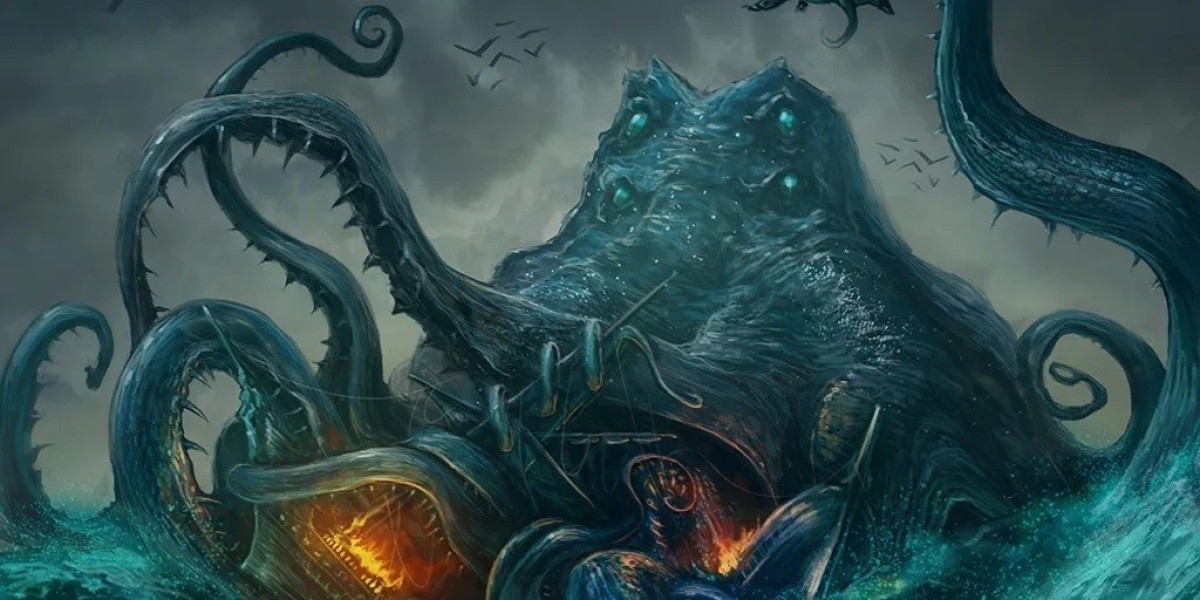Few garments in the vast world of fashion carry the kind of weight, history, and cultural significance that the Stussy Shirt does. It’s not just a piece of cotton stitched together with a logo — it’s a symbol of rebellion, artistry, and unity among those who live on the edge of culture. The Stüssy shirt has evolved from humble beginnings on the beaches of Laguna in the early 1980s to becoming one of the most recognizable icons in global streetwear. Its journey reflects more than just the rise of a brand; it mirrors the birth and evolution of streetwear itself.
A Wave That Started in California
The story of the Stüssy shirt begins in the early 1980s, when Shawn Stüssy, a young surfer and artist from Laguna Beach, California, started screen-printing his hand-drawn signature onto T-shirts and surfboards. His initial intention was simple — to promote his custom surfboards. Yet, what he inadvertently created was something much greater.
These shirts, emblazoned with his scrawled signature, began circulating among surfers, skaters, and musicians in Southern California. They represented a break from the glossy surf brands that dominated the era. Stüssy’s designs weren’t polished or corporate; they were raw, expressive, and effortlessly cool. His T-shirts quickly became an underground badge of identity — worn by those who didn’t just want to surf waves but create their own cultural ones.
The simplicity of that early shirt — a loose fit, bold graphic, and the unmistakable handwritten logo — became the DNA of a global movement. What began as a grassroots surf experiment evolved into one of the first true streetwear empires.
Design Philosophy: Simplicity Meets Attitude
A Stüssy shirt isn’t about flamboyance or excess; it’s about attitude. The design language that defines every Stüssy shirt revolves around a few key ideas — authenticity, adaptability, and art.
Each design feels deliberate but never forced. The signature logo remains the cornerstone — that graffiti-inspired scrawl captures the brand’s rebellious energy, yet it’s balanced by minimalism and restraint. You might see a simple black tee with a small Stüssy emblem on the chest, or a bold graphic piece filled with abstract art, city names, or reggae-inspired prints. No matter the design, every Stüssy shirt carries an aura of self-assured confidence — it never tries too hard, yet always stands out.
The brand’s graphics often pull from subcultures that have shaped global youth identity: punk, hip-hop, reggae, skate, and surf. These influences intertwine seamlessly, producing designs that transcend specific scenes and appeal to anyone with a sense of individuality.
From their famous “International Tribe” series — featuring cities like London, Tokyo, New York, and Los Angeles — to their iconic crown and dice motifs, Stüssy shirts embody a language that speaks to the global youth community. They whisper to those who understand creativity as rebellion and fashion as freedom.
The Art of the Logo: More Than Just a Name
When you look at a Stüssy shirt, the first thing that stands out is the logo — that imperfect, hand-drawn signature. But what makes it so iconic isn’t just the design; it’s what it represents.
The Stüssy logo embodies the do-it-yourself (DIY) spirit that defines streetwear. Unlike the precision of luxury labels or the branding excess of fast fashion, Stüssy’s logo feels human. It looks like something sketched on a napkin, something spontaneous and authentic. That imperfection became its greatest strength — a visual identity that rejected the polished world of mainstream fashion.
It also carries nostalgia. The handwritten mark links every modern Stüssy piece back to its surf roots. It’s a reminder that streetwear was never meant to be about prestige — it was about people, community, and creativity. Wearing that logo today isn’t just about representing a brand; it’s about carrying a legacy that started with one man’s signature and evolved into a worldwide language of style.
Fabric, Fit, and Feel: The Construction of a Classic
While Stüssy’s designs are what grab attention, it’s the quality and construction that keep the brand relevant decade after decade. A Stüssy shirt feels different — heavier, softer, more intentional.
The brand typically uses premium cotton with a mid-weight or heavyweight build, giving each shirt a structure that holds up over time. The fit has evolved through the years, from the loose silhouettes of the 1980s to more contemporary relaxed fits today. Yet Stüssy never chases trends — instead, it adapts its cuts to reflect the flow of youth culture while staying true to its relaxed roots.
The stitching, neckline, and wash treatments add subtle distinctions that make a Stüssy shirt feel timeless. Some designs use pigment-dyed techniques, creating a vintage, washed-out effect that looks as if the shirt has already lived a few lives. Others embrace crisp, vibrant colors for a sharper aesthetic. Every piece carries that effortless California vibe — durable enough for the streets, soft enough for the beach.
Cultural Symbolism: The Shirt as a Badge of Identity
More than any other piece of clothing, the Stüssy shirt represents belonging. But it’s not a belonging to one group — it’s a connection to a mindset.
In the 1990s, Stüssy became a global phenomenon, not through advertising, but through word of mouth. Skaters, DJs, graffiti artists, and designers all gravitated toward it. The brand was among the first to merge different subcultures — blending the laid-back surf scene of California with the gritty energy of New York street life. It bridged worlds that previously seemed separate, showing that creativity didn’t have to stay in one lane.
Wearing a Stüssy shirt became a silent way of saying, I get it. It communicated taste, awareness, and cultural literacy. From hip-hop legends like Tribe Called Quest to Japanese fashion pioneers like Hiroshi Fujiwara, Stüssy found its way into the wardrobes of those shaping culture. Its influence spread organically — across skateparks, clubs, and art studios worldwide.
Today, the Stüssy shirt still carries that same meaning. It’s not about flexing wealth or exclusivity. It’s about expressing individuality, community, and a shared sense of authenticity.
Collaborations and Global Reach
Stüssy’s collaborations are legendary — and the shirt is often the centerpiece. Over the decades, the brand has partnered with names like Nike, Supreme, Comme des Garçons, and Dior, yet it always manages to maintain its independent spirit.
When Stüssy collaborates, it’s not about chasing trends; it’s about mutual respect. The result is a fusion of creative worlds — a Stüssy x Nike tee might combine sportswear functionality with coastal cool, while a collaboration with Dior brings luxury craftsmanship into the realm of streetwear. Each drop reaffirms Stüssy’s place at the intersection of style, culture, and art.
This balance between accessibility and exclusivity is what makes the brand timeless. You can find a basic Stüssy tee in a skate shop or a limited-edition version at a high-end boutique. That duality — the ability to exist everywhere yet remain authentic — is what sets Stüssy apart from imitators.
The Evolution of Style: From Beaches to Runways
In its early years, the Stussy shirt was a symbol of surf culture, worn mostly by locals who lived by the ocean. But as its influence spread, the shirt evolved alongside the people who wore it.
By the mid-1990s, Stüssy had become central to the rise of urban streetwear. It was no longer just for surfers — it was for skaters in Los Angeles, rappers in New York, and fashion kids in Tokyo. The brand became part of a global youth network that shared a love for music, style, and independence.
As the 2000s rolled in, Stüssy retained its cool by avoiding overexposure. While other brands became victims of hype cycles, Stüssy stayed grounded. It didn’t need flashy marketing or celebrity endorsements — its legacy spoke for itself. The shirt remained a wardrobe staple, worn by those who valued authenticity over trends.
In the 2010s and 2020s, as fashion blurred the lines between streetwear and luxury, Stüssy once again found itself at the center of cultural conversation. High-end designers began referencing its aesthetic; vintage Stüssy shirts became sought-after collector’s items. The world had caught up to what Stüssy had been doing for decades — merging art, identity, and design into one cohesive form.
Why the Stüssy Shirt Remains Relevant
The staying power of the Stüssy shirt lies in its ability to adapt without losing its essence. While trends come and go, the Stüssy ethos remains the same — creativity, community, and self-expression.
Unlike fast-fashion brands that replicate styles to chase the moment, Stüssy evolves naturally. It responds to culture instead of dictating it. Whether it’s a vintage logo reissue, a new colorway, or an unexpected collaboration, every Stüssy release feels both nostalgic and modern.
What truly keeps the Stüssy shirt relevant is its emotional connection to the wearer. It’s more than fashion; it’s a memory, a vibe, a sense of belonging. You can spot it on an old-school skater, a Tokyo fashion enthusiast, or a young creative in Berlin — and it fits every context effortlessly. That’s the power of timeless design: it speaks across generations without ever needing translation.
The Modern Aesthetic: Sustainability and Substance
In an age where consumers demand not just style but responsibility, Stüssy continues to evolve thoughtfully. The brand has increasingly focused on sustainability — opting for better materials, ethical production methods, and longer-lasting garments.
The modern Stüssy shirt reflects this shift subtly but meaningfully. Many newer pieces use organic cotton and eco-conscious dyes, while the brand’s messaging promotes mindful consumption. Yet, Stüssy never markets itself as a “sustainable brand” — it simply integrates responsibility into its DNA, aligning with the same authenticity that has defined it from the start.
This blend of style and substance gives Stüssy an edge in a world oversaturated with temporary fashion. A Stüssy shirt isn’t disposable; it’s built to be worn, washed, and lived in. Each crease and fade adds character — turning the shirt into a reflection of personal stories rather than seasonal trends.
Collectibility and the Vintage Revival
One fascinating dimension of the Stüssy shirt’s legacy is its place in the vintage market. As streetwear nostalgia has surged, collectors have sought out original Stüssy pieces from the 1980s and 1990s.
Vintage Stüssy shirts, especially those featuring rare graphics or early logo iterations, have become prized items among enthusiasts. The reason is simple — each piece tells a story of an era when streetwear was still an underground movement. The faded prints, slightly worn cotton, and retro tag designs all add to their charm.
This collectibility underscores what makes Stüssy so special: the brand never tried to be “retro” — it simply aged gracefully. The shirts from decades ago still look relevant today because the design language was never tied to fleeting aesthetics. Stüssy’s art direction has always been rooted in timeless cool — something that resists the expiration dates of trends.
Styling the Stüssy Shirt: Effortless Versatility
A major reason behind the Stüssy shirt’s universal appeal is its versatility. It transcends dress codes and age groups.
For a laid-back look, you can pair a classic black or white Stüssy tee with denim shorts and sneakers — a nod to its surf and skate origins. For something more elevated, layering an oversized Stüssy shirt with a vintage jacket or relaxed trousers creates an effortless street-luxury blend.
What’s powerful about the shirt is its neutrality. It doesn’t dictate how to be worn — it adapts to you. Its unisex design and relaxed fit invite creativity. Whether tucked, layered, cropped, or oversized, a Stüssy shirt feels personal.
Fashion enthusiasts often use it as a canvas — styling it with jewelry, layering it over turtlenecks, or pairing it with tailored pieces for contrast. That flexibility keeps it fresh across different fashion movements and lifestyles.
The Future of the Stüssy Shirt
As fashion continues to evolve, one thing remains certain: the Stüssy shirt will endure. Its influence runs too deep to fade. From its surf roots to its global streetwear dominance, it has continually reinvented itself while staying true to its core.
In many ways, Stüssy has become more than a brand — it’s a cultural ecosystem. Its shirts connect generations of creatives who see fashion not as consumption, but as communication.
The future will likely bring new collaborations, digital releases, and sustainable innovations, but the essence will remain the same — a simple shirt with a powerful story. And that’s what makes Stüssy eternal. Every thread, logo, and graphic whispers a reminder: authenticity never goes out of style.
More Than a Shirt — A Cultural Artifact
The Stussy Clothing is a paradox — minimalist yet expressive, local yet global, simple yet iconic. It stands as a testament to the power of design rooted in authenticity.
From Shawn Stüssy’s surf shack to runways and street corners around the world, this shirt has journeyed through decades of cultural change without losing its spirit. It symbolizes the intersection of art, fashion, and identity — proving that true style is never about status, but about soul.
Wearing a Stüssy shirt is like wearing a piece of history — a canvas that carries decades of creativity, rebellion, and connection. It’s not just fabric and ink; it’s a lifestyle, a language, and a legacy that continues to inspire new generations of dreamers and doers.








